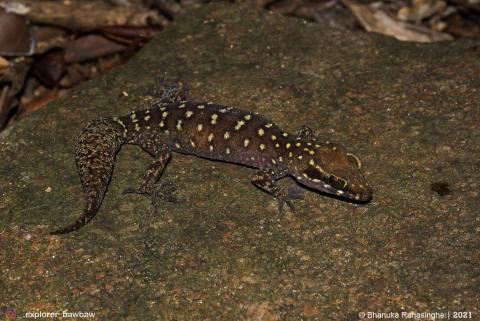Taxonomically Divided: The Hidden Diversity and Inland Radiation of Sri Lanka’s Ground-dwelling Geckos of the Genus Cyrtodactylus
The genus Cyrtodactylus has recently been classified phylogenetically into several clades, subclades, groups, and some into Sri Lankan Cyrtodactylus. Certain complexes from the Indian subcontinent have been assigned to the “C. triedrus group”. This group is comprised of medium-sized species (SVL 50.6–105.7 mm) and are composed of five major species complexes: fraenatus, triedrus, deccanensis, jeyporensis, and collegalensis. Among these complexes, the latter four are composed of ground and litter dwelling species, which were previously assigned to the genus Geckoella; and is currently being treated as a subgenus. Cyrtodactylus triedrus, an endemic species of Sri Lanka, has long been considered a widely distributed single species in this part of the world. Based on morphological and phylogenetic evidences, we demonstrate that C. (G.) triedrus is not a single species, but a species complex. Research team also describe a new species that is restricted to intermediate savanna-mixed dry lowland forested habitats. Furthermore, they resurrect Geckoella punctata, assign it to the genus Cyrtodactylus and designate a lectotype that they redescribe. The genetic divergence across species of the C. triedrus clade varies between 11–26% in the studied fragment of the mitochondrial NADH dehydrogenase subunit 2 gene. The molecular phylogeny of the ground dwelling radiation of the subgenus Geckoella indicates deep splits between the Indian species and Sri Lankan endemic C. (G.) triedrus sensu stricto, and between Indian dry and wet zone clades. Cyrtodactylus (G.). triedrus is restricted to the moist or submontane forests in the Central highlands of Sri Lanka and is redescribed herein based on its holotype.

